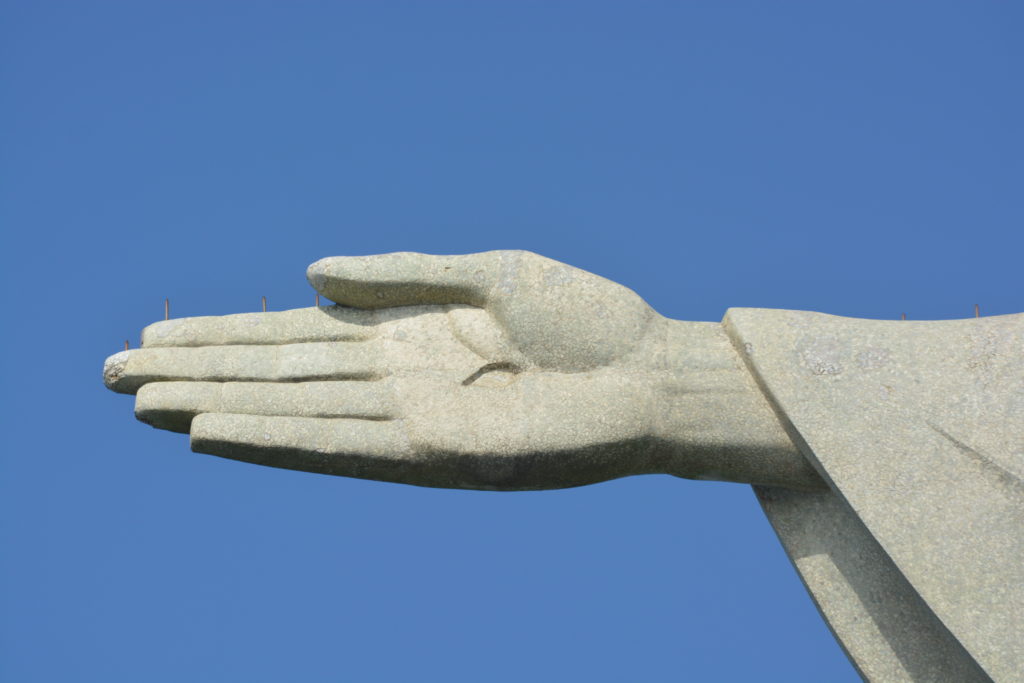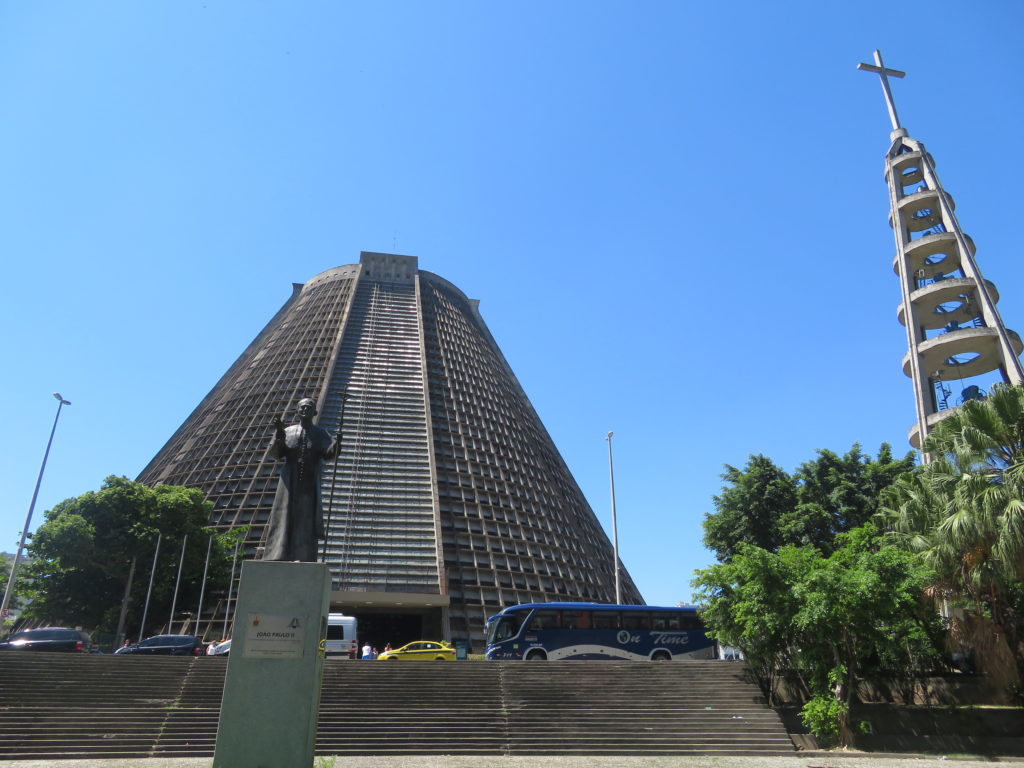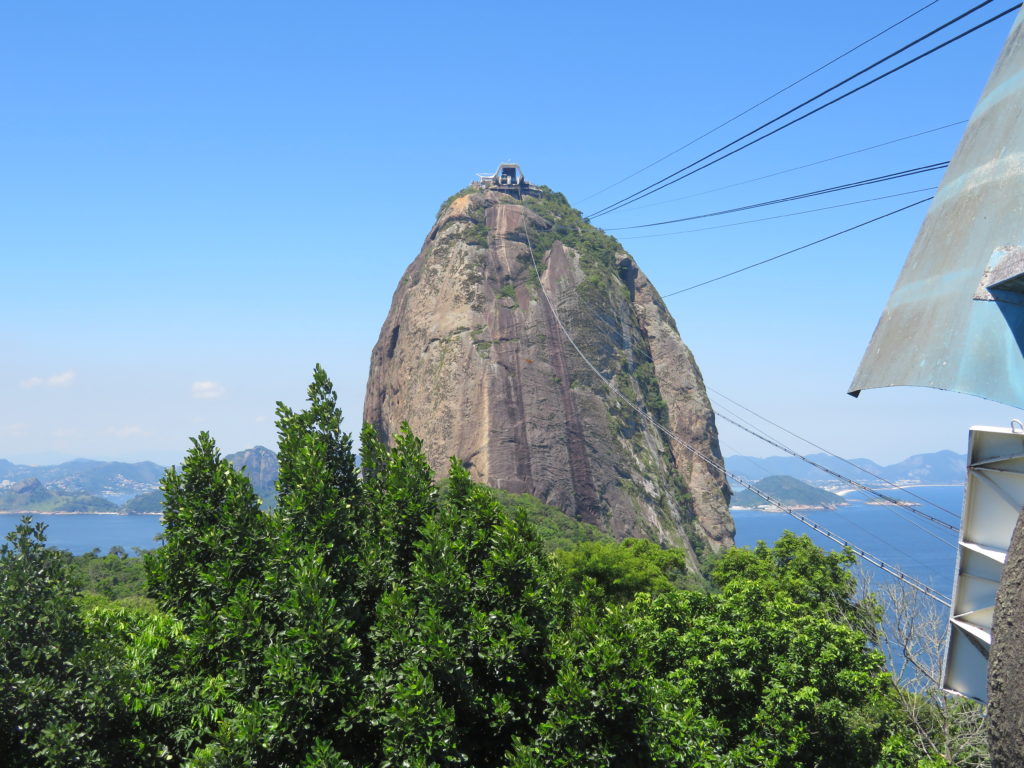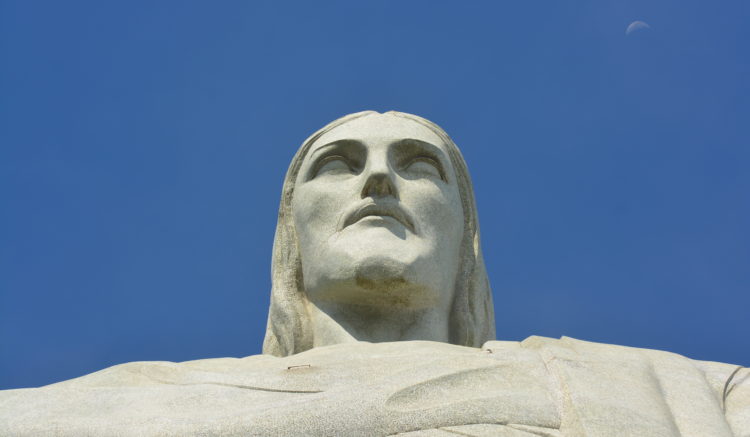After researching about the Corvocado and the logistics of getting there now that it is designated one of the new seven modern wonders of the world by popular vote, there are now some quite complicated logistics you must go through to get there. As a consequence we decided to do that tourist thing and purchase a city tour that covered both the Corvocado and the Pãu de Açúcar.
We were picked up slightly late at our hotel just before 8 am in a mini bus full of South American tourists. The principal language of the group being Spanish, together with us and some Brazilians, and our guide Maria, had a big job on her hands managing the group and communicating in three different languages, we were the only native English speakers in the group.
The bus negotiated the hairpins and switch backs and got us all up to the Corvocado by 9:30 am. The Corvocado was already very crowded at that time and once at the monument it was pretty difficult to move around given the volume of the crowds. We had 40 minutes at the top to take pictures and generally take in the sacredness of the site – there is a small chapel at the rear of the monument. The Corvocado itself has those wonderfully clean lines that were the rage back in the 1930s when it was originally built by the French sculptor Paul Landowski and his Brazilian engineer colleague Heitor da Silva Costa. Back in 2006 when we were there before the site was significantly less crowded.
With some difficulty our tour guide managed the herd all the group back onto the bus, though not without having to coral a number of the group away from the overpriced shops.

From there the tour took us outside the Maracaná Stadium, where Germany and Uruguay won the World Cups in 2014 and 1950 respectively. On the discussion of football the group became particularly animated, there were a number of Argentinians in the group so lots of friendly banter and also excitement for the forthcoming World Cup in Russia. The Brazilians were particularly confident of there forthcoming success in Russia and were surprised when I pointed out that Germany could equal their record of wins there.
A brief visit for photos of the amazing Catedral Metropolitana de São Sebastian, a massive tepee structure with four huge vertical glass windows each in a different colour was next on the agenda. Brazil really does do modern architecture well. However surprisingly in such a strong catholic country our guide had no difficulty in corralling the group. Maybe this was because lunch was next up and food clearly rates very highly in the Latin American sense of priorities.

After lunch it was the Pãu de Açúcar, with its two cable car rides to the top. This was significantly less crowded than the Corvocado, but with only 30 minutes at the top there was barely enough time to take in all the views and pictures. The day was particularly sunny and clear so the Corvocado, Copacabana Beach, Botafogo, Niterói and Guanabara Bay were spectacular. The cable car itself is called Bondinho, which is nothing to do with the fight that James Bond had with Jaws in the film Moonraker, it is simply the name for cableway in Portuguese.

The mountain is one of a number of monolithic structures rising from the sea in Rio de Janeiro and was originally named by the Portuguese in the 16th century as it looked like conical blocks of clay that were used to transport sugar back to Europe.

All in all it was a whistle stop tour round Rio de Janeiro and while we did not have as long as we would have liked at each of the sites, as it was not our first time in Rio it was worthwhile. Also the experience of being on a tour that largely consisted on Latin American tourists was certainly a new experience for us. In particular we were impressed with how Maria kept control of the group through out.



